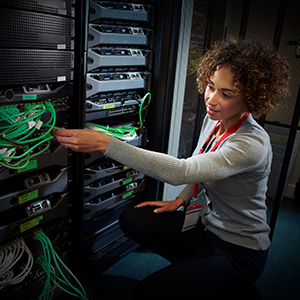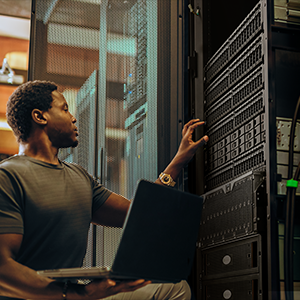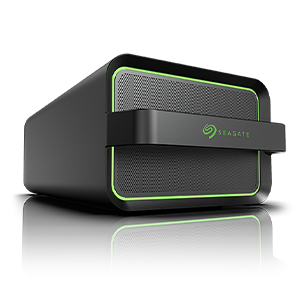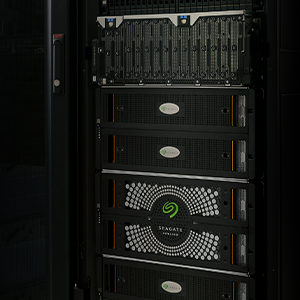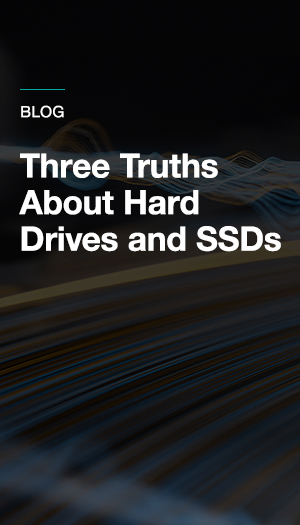As enterprises and data centers strive to keep pace with the relentless growth of data, they face a critical challenge: meeting demands for both scalability and performance. These organizations must balance ever-expanding storage needs with service-level agreements (SLAs) that require high throughput and low latency. Without solutions that can handle both, critical operations falter, and inefficiencies ripple through IT infrastructure, increasing costs and lowering productivity.
At the heart of this challenge is a dynamic often described as the "data rate tug of war." This tension stems from the dual imperative to store more data than ever before while ensuring it can be accessed quickly and reliably. Hard drives, as the backbone of global data systems, play a pivotal role in resolving this equilibrium. They must find balance in an increasingly polarized landscape where capacity and speed can feel mutually exclusive.
Josiah Wernow, principal engineer at Seagate, frames this challenge with precision: “It’s not just about storing more—it’s about retrieving it in a timely manner. That’s where we find ourselves, working in that equilibrium between capacity and speed.” For Seagate, this means pushing the limits of engineering and redefining the expectations for what hard drives can achieve.
The interplay of data capacity and speed.
Hard drives are traditionally seen as the workhorses of storage systems—reliable, cost-effective, and capable of immense capacity. Yet, capacity alone is not sufficient. Cloud providers, enterprise customers, and AI applications require drives that not only hold vast amounts of data but can retrieve it at lightning speeds. Without this performance, critical operations falter.
This dichotomy is particularly evident in cloud environments. Providers must balance scalability with service-level agreements that demand high throughput and low latency. As Wernow explains, “If a drive can’t keep up with access demands, you end up with stranded capacity. It’s there, but it’s not usable at the scale you need it to be.” This stranded capacity represents a critical inefficiency—one that can cascade across IT infrastructure, increasing costs and lowering productivity.
Redefining speed and capacity.
Seagate has long been at the forefront of storage innovation, and its response to the capacity-speed tug of war is rooted in engineering precision. One of our recent advancements is dual actuator technology. This system effectively divides the workload of retrieving data across two independent arms within the drive, doubling throughput capability compared to traditional single-actuator drives. For large-scale environments like data centers, this can mean the difference between meeting performance goals and falling short under heavy demand.
Beyond mechanical solutions, Seagate’s Mozaic platform featuring Heat-Assisted Magnetic Recording (HAMR) technology plays a pivotal role. HAMR uses controlled laser heating to enable data to be written on much narrower tracks, pushing areal density to unprecedented levels. Narrow tracks traditionally present challenges to read/write speeds, but Seagate’s Mozaic platforms will continue to ensure performance as capacity scales into the future. This requirement for high TPI (tracks per inch) and BPI (bits per inch) puts additional pressure on the servo-mechanical subsystem, but Seagate mitigates this with advanced tri-stage suspensions and adaptive servo feedback technologies.
Complementing these technologies is Seagate’s optimization of spindle speeds. While higher spindle speeds can drive faster data rates, they come with trade-offs such as increased vibration and power consumption. Seagate has developed solutions that balance these variables, ensuring that hard drives remain reliable even at the high spindle speeds used today.
Innovating for and with customers.
Seagate’s engineering breakthroughs are deeply informed by collaboration with its customers. Each data center has unique demands, from the heavy, unpredictable workloads of cloud providers to the specialized needs of AI research environments. Understanding these challenges is critical to developing solutions that perform under real-world conditions.
For example, Seagate has worked closely with cloud and enterprise customers to develop firmware that dynamically adjusts read/write parameters of enterprise hard drives based on workload fluctuations. Similarly, by continuing to innovate higher per-platter capacities within industry-standard hard drive form factors, Seagate ensures that storage systems can maximize capacity while optimizing their rack density and energy efficiency.
Wernow emphasizes the value of this feedback loop: “The best solutions don’t come from a lab—they come from understanding how technology is used in the field and iterating based on those needs.”
Expanding possibilities for AI, cloud, and enterprise storage.
The stakes for solving the capacity-speed balance extend far beyond individual organizations. Reliable storage underpins the global technology ecosystem. It enables advances in AI, powers the expansion of cloud services, and supports critical applications in fields like healthcare, transportation, and finance. When hard drives can deliver on both capacity and speed, they remove bottlenecks that might otherwise slow these advancements.
Take AI workloads as a prime example. Training advanced machine learning models requires access to enormous datasets, with retrieval speeds that can keep up with intensive computational demands. By addressing the data rate tug of war, Seagate ensures that such innovations can continue to scale without interruption.
Additionally, the ripple effects of Seagate’s enterprise storage solutions contribute to lowering total costs of ownership (TCO) for data centers. With drives capable of both high density and rapid access, organizations can reduce redundancy and eliminate inefficiencies in their storage infrastructure.
Seagate’s vision for the future of enterprise data storage.
The balancing act between capacity and speed will only grow more challenging as data demands increase. Seagate’s approach to innovation ensures that hard drives can meet these demands while continuing to evolve. Technologies like HAMR and dual actuators are not endpoints but building blocks for the future.
Looking ahead, Wernow reflects on the broader implications of this work: “Every improvement we make enables something bigger—whether it’s faster analytics, smarter AI, or just a better experience for the people using technology every day.” Through its engineering expertise, Seagate is not only solving the problems of today but empowering the possibilities of tomorrow.

